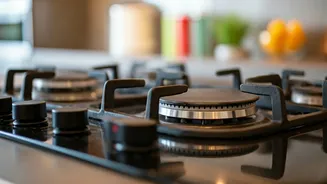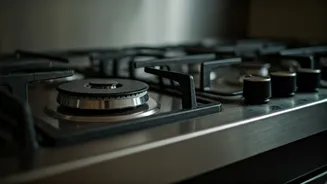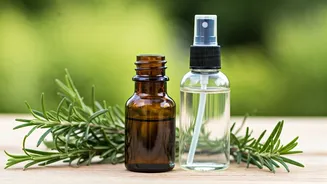Daily Maintenance Matters
Maintaining your gas stovetop's cleanliness doesn't have to be a major chore; regular, gentle cleaning can prevent a build-up of grime and keep it looking
its best. The best approach is to wipe down the surface immediately after each use, once it has cooled down. Use a soft cloth or sponge with warm, soapy water to remove any spills, splatters, or food particles. Rinse the surface thoroughly to eliminate soap residue, and dry it with a clean cloth. This simple routine prevents stubborn stains from forming, which are much harder to remove later. Regularly inspect the burner heads and grates, removing any debris that may have accumulated. This proactive approach saves you significant time and effort in the long run, and helps avoid the need for deep cleaning. This habit ensures your stovetop remains clean and functional with minimal effort.
Gentle Cleaning Solutions
When it comes to cleaning solutions, simplicity and gentleness are key for gas stovetops. Avoid harsh chemicals that could damage the surface or leave behind harmful residues. Instead, opt for mild, effective, and readily available options. A mixture of warm water and a few drops of dish soap is usually sufficient for everyday cleaning, easily removing light grease and spills. For tougher stains, consider a paste made from baking soda and water. Apply this paste to the affected areas, let it sit for a few minutes, and then gently scrub with a non-abrasive sponge or cloth. Vinegar is another great natural cleaner. Dilute white vinegar with water in equal parts and use it to wipe down the stovetop, which helps to cut through grease and remove water spots. Rinse well with clean water and dry thoroughly to achieve a sparkling, clean finish. This method avoids scratches and preserves the stovetop's appearance without using harsh chemicals.
Tackling Stubborn Stains
Dealing with stubborn stains on your gas stovetop demands a bit more effort and some strategic approaches. For baked-on food or hardened spills, begin by softening the area. You can do this by applying a warm, wet cloth over the stain for a few minutes to help loosen it. Next, create a paste using baking soda and water or a mixture of baking soda and vinegar for increased power. Apply this paste directly onto the stain, ensuring complete coverage. Allow the paste to sit for 15-20 minutes, allowing it to penetrate and lift the residue. Gently scrub the affected area with a non-abrasive sponge or a soft-bristled brush. This helps to break down the stain without scratching the stovetop's surface. Rinse thoroughly with clean water to remove all traces of the cleaning solution. For extremely tough stains, a plastic scraper can carefully dislodge stubborn particles, but make sure to use it gently to avoid scratches. Once clean, dry the surface completely.
Caring for Burner Parts
Cleaning the burner heads and grates of your gas stovetop is crucial for ensuring optimal performance and safety. Regularly remove the burner caps and grates and wash them separately. Soak them in warm, soapy water for about 20-30 minutes to loosen any grease or food debris. Use a non-abrasive sponge or a soft brush to scrub off any residue. Pay special attention to the burner ports, ensuring that they are clear of any blockages. Use a small needle or a toothpick to carefully clear out any food particles or other obstructions. Rinse the burner parts thoroughly to remove all traces of soap. Dry all components completely before reassembling them. Properly cleaned burners ensure even heat distribution and prevent potential safety hazards. Regularly inspecting these parts guarantees efficient and safe cooking.
Preventing Damage & Safety
When cleaning your gas stovetop, safety should always be the top priority. Always ensure that the stovetop is completely cool before you start cleaning, to avoid burns. Never use abrasive cleaning pads, steel wool, or harsh chemicals that could damage the surface or the finish of your stove. When using cleaning solutions, apply them directly to the cloth or sponge, instead of spraying them directly onto the stovetop, which will help to control the amount of liquid. During cleaning, ensure that no water or cleaning solution enters the gas burner ports, as this can affect the burners' function. After cleaning, thoroughly dry all components before reassembling them. For stubborn stains, test any cleaning solution on an inconspicuous area first to ensure it won't discolor or damage the surface. Prioritize proper ventilation in the kitchen during cleaning to avoid inhaling cleaning agents. By taking these safety measures, you protect both yourself and your stovetop.











